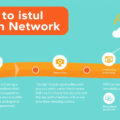In the world of wireless networking, channel selection significantly influences network performance, especially for backhaul solutions in both residential and commercial settings. Choosing less crowded channels can mitigate interference, improve signal quality, and enhance overall performance. In this article, we’ll explore why using less congested channels is beneficial and discuss practical considerations when implementing backhaul solutions.
Understanding Backhaul in Wireless Networking
Backhaul refers to the connection between different parts of a network, especially within wireless mesh systems. It typically connects access points (APs) or nodes to a central router or the internet. Effective backhaul is crucial for maintaining high data rates and reliable connections, particularly in environments with multiple users or devices.

The Challenge of Channel Congestion
In the widely used 2.4GHz frequency band, channel overlapping can lead to significant congestion. Channels 1, 6, and 11 are often recommended because they do not overlap. However, they are also the most commonly used channels, leading to high interference levels, especially in urban areas or densely populated settings. Although lesser-known channels (such as 3, 4, 8, or 9) may appear less crowded, they technically overlap with the primary channels. This scenario creates a dilemma: should one stick to the popular channels, or venture into the less populated yet overlapping channels?
Advantages of Using Less Crowded Channels
-
Reduced Interference: By selecting channels that are less congested, network users can experience lower levels of interference from neighboring signals. This is particularly important in environments with many wireless devices that might be competing for the same airspace.
-
Improved Throughput: When there’s less competition for bandwidth, the potential for higher data throughput increases. Network devices can communicate more efficiently, offering users better speeds and a more stable connection.
-
Better Signal Strength and Quality: In situations where the primary channels are overcrowded, moving to a less used channel may result in a stronger and more reliable signal. This can lead to fewer dropouts and better overall user satisfaction.
Practical Considerations for Channel Selection
When configuring backhaul solutions, consider the following:
-
Conduct Site Surveys: Utilizing tools to analyze the wireless landscape can help identify which channels are the most congested. Applications and devices that scan for existing networks and their signal strengths can provide insights into the best channels to use.
-
Consider Network Configuration: In mesh networks, it’s crucial to ensure that all devices within the system are aware of the selected channels to optimize performance. This might mean opting for a wired backhaul if wireless signals encounter too much interference.
-
Upgrade to 5GHz Devices: If feasible, deploying equipment that operates on the 5GHz band can alleviate the pressure on the crowded 2.4GHz channels. The 5GHz band offers more non-overlapping channels and generally experiences far less congestion.
Conclusion
In conclusion, choosing less crowded channels for backhaul solutions can significantly enhance wireless network performance. While traditional wisdom favors channels 1, 6, and 11, exploring less popular options may yield better results in congested environments. A strategic approach involving site surveys and the consideration of hardware capabilities will help in optimizing a network for operational efficiency and user satisfaction. Ultimately, careful channel selection not only improves connectivity but also lays a foundation for future-proofing your network in an increasingly wireless world.



